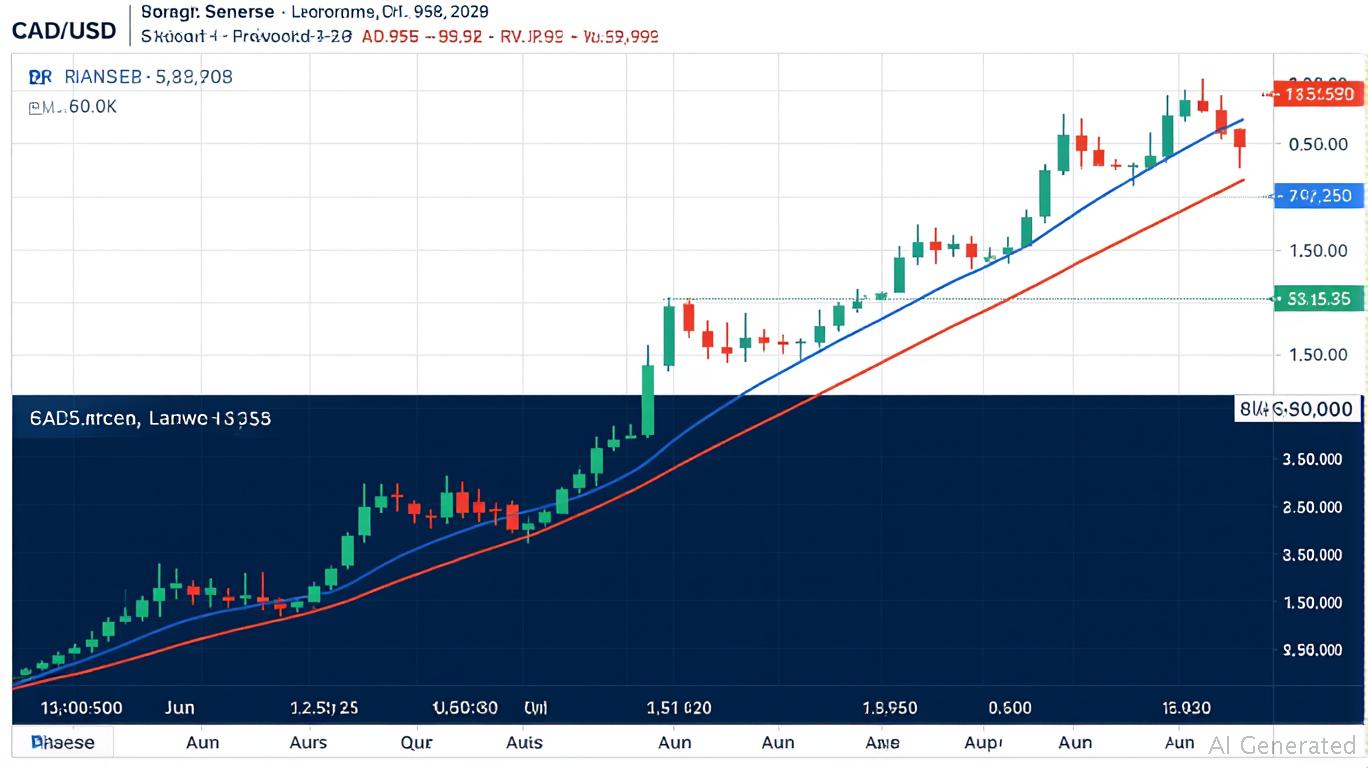News/
Articles/
Articles Details
Your AI small-business ally, constantly scanning for both hidden risks and game-changing opportunities in this economy.
The Canadian dollar (CAD) has surged to an 8-month high against the U.S. dollar (USD), breaking critical resistance levels amid a confluence of technical momentum, narrowing policy divergences, and improving fundamentals. Traders and investors should take note: the loonie’s rally is no fluke. This article dissects the technical, macroeconomic, and policy factors fueling CAD strength and outlines a high-conviction strategy to profit from this trend. 
The CAD/USD exchange rate has pierced the key resistance of 1.3557/0.7375 USD, a level that defined the currency pair’s upper boundary for months. This breakout is technically significant:
– Ascending Triangle Pattern: The pair has been consolidating within an ascending triangle since late 2024, with higher lows and a flattening resistance. The recent breakout signals a potential 10% upward move toward 1.32 USD/CAD over the next 6–12 months.
– RBC’s “Sell USD Rallies” Bias: Analysts at RBC Capital Markets highlight that USD gains against CAD are unsustainable due to U.S. debt concerns, erratic trade policies, and expectations of Federal Reserve rate cuts. Their June report underscores a trading range of 1.3500–1.3600 (buyers) and 1.3900–1.4000 (sellers), with the CAD poised to test lower resistance levels.
The RSI (14) for CAD/USD has crossed into bullish territory (above 50), while the MACD histogram shows positive divergence, reinforcing the upward momentum.
The 2-year bond yield spread between Canada and the U.S. has narrowed from 1.19% in early 2025 to 1.19% (3.80% for the U.S. vs. 2.61% for Canada in Q2). While the U.S. yield remains higher, the gap is shrinking as both central banks pivot toward easing.
This narrowing differential reduces the USD’s traditional carry-trade advantage, a key driver of CAD weakness in prior years. With the Bank of Canada (BoC) expected to cut rates gradually and the Fed’s pause likely extending into 2026, the CAD’s valuation becomes more attractive.
Canada’s May trade deficit shrank to CAD 5.9 billion, a 17% improvement from April’s record CAD 7.1 billion. Exports rose 1.1% month-over-month, driven by surging shipments of gold to the UK and meat products to Japan, offsetting U.S. trade headwinds. Imports fell 1.6%, marking their third consecutive decline.
This divergence in trade performance highlights Canada’s success in diversifying export markets, reducing reliance on the U.S. economy.
Canada’s May CPI rose just 1.7% year-over-year, down from peaks of 3.4% earlier in 2025. Core inflation metrics (CPI-trim and CPI-common) remain stable at 2.6%, within the BoC’s target range.
The moderation in inflation, particularly in shelter costs (down to 3.0% Y/Y from 5.2%), gives the BoC room to cut rates further without igniting price pressures. This contrasts sharply with the U.S., where fiscal deficits and trade policies are fueling structural USD weakness.
The Canadian dollar’s rally is supported by technical breakouts, narrowing rate differentials, and resilient trade data, while the USD faces structural headwinds. Investors who position long CAD/USD now can capitalize on a currency pair that is undervalued, fundamentally robust, and technically primed to test multi-year lows against the greenback.
Actionable Advice: Allocate 5–10% of a diversified portfolio to CAD via FXC or direct forex exposure, with stops below 1.36 and targets at 1.32. This is a high-conviction trade for the next 6–12 months.
The CAD’s time to shine is now. Act swiftly, but stay disciplined.
No comments yet
Canadian Dollar's Rally Amid USD Weakness and Policy Divergence: A High-Conviction Bullish Case – AInvest



